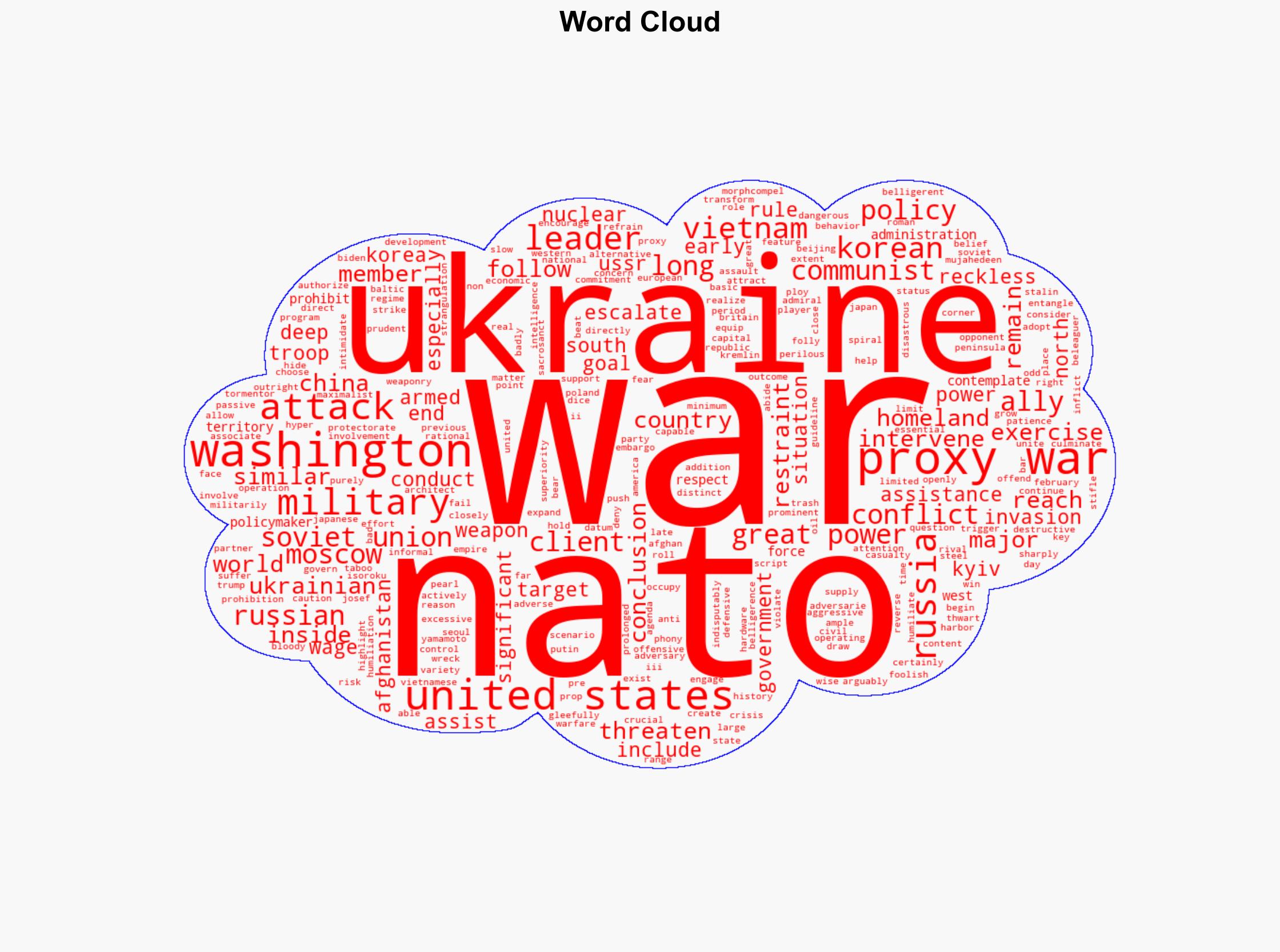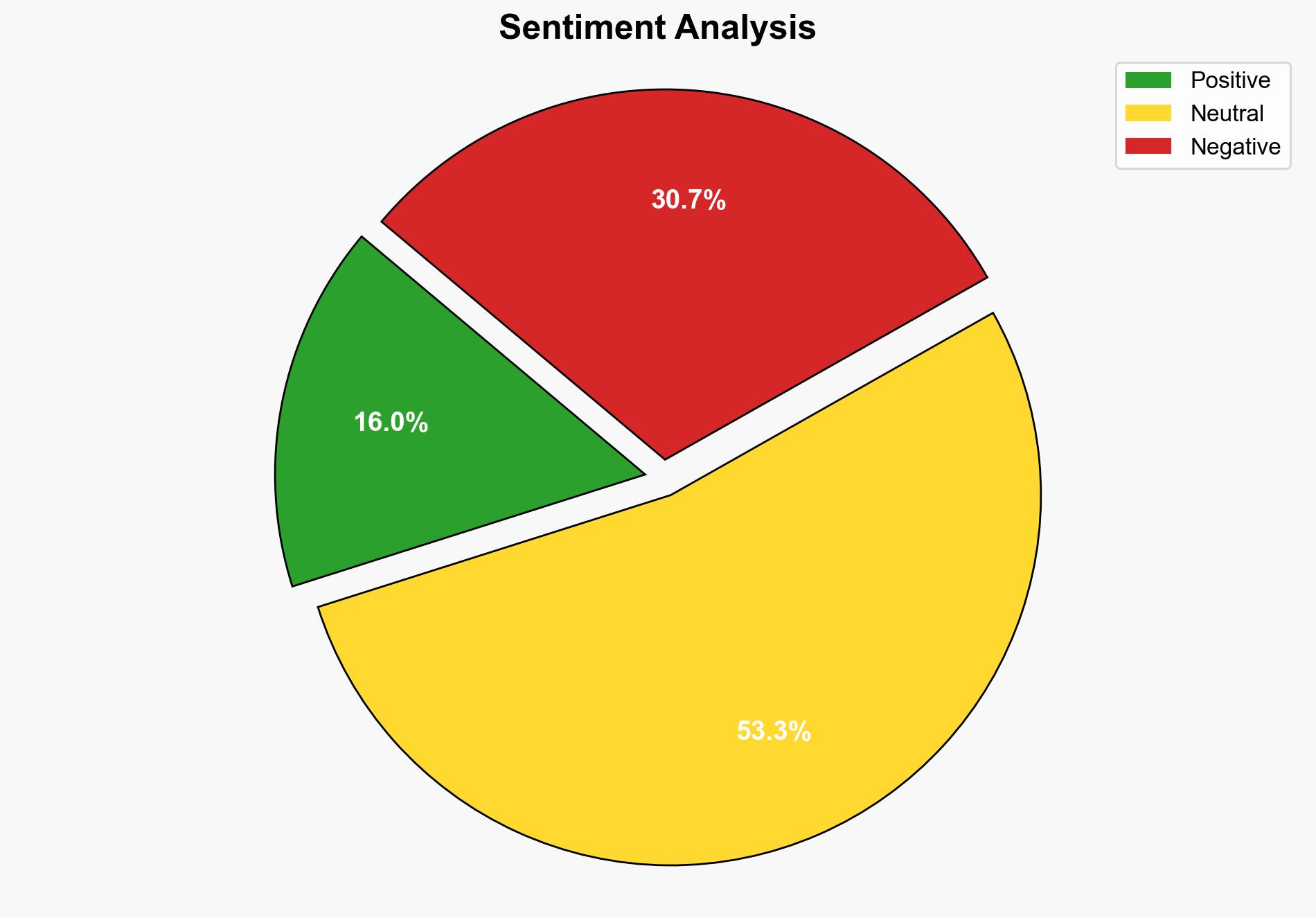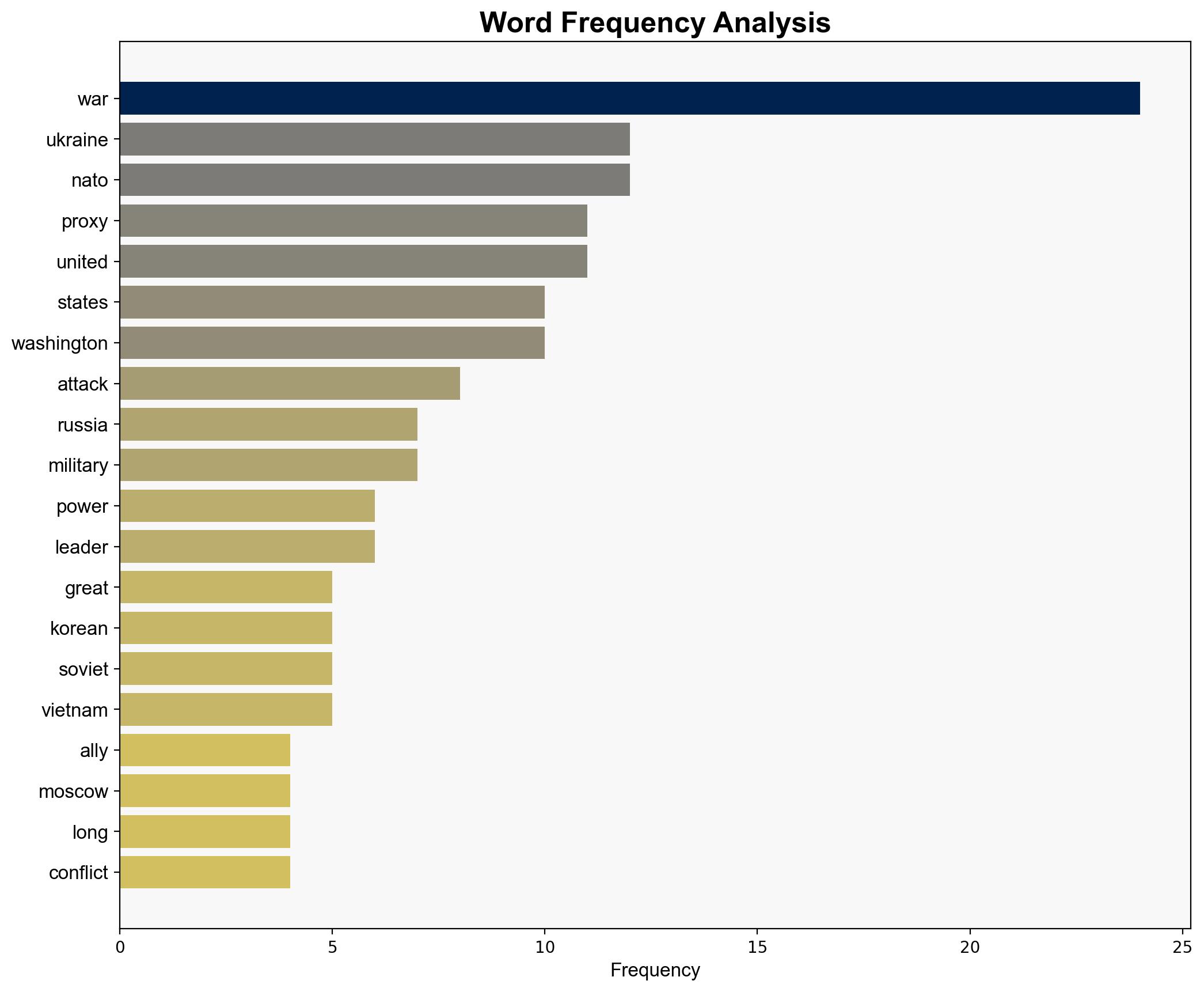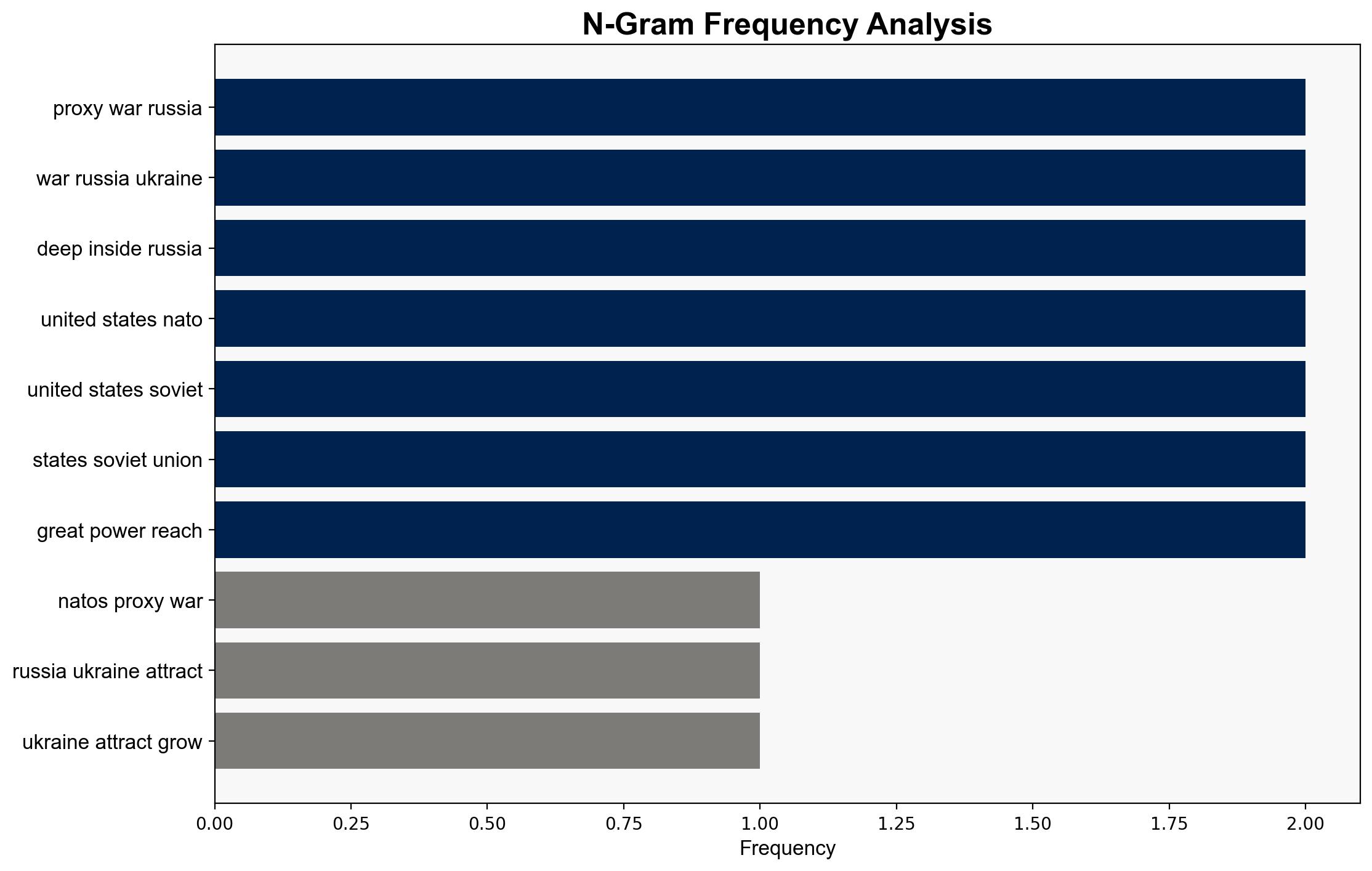US Now Violating Long-Standing Informal Proxy War Rules – Antiwar.com
Published on: 2025-10-07
Intelligence Report: US Now Violating Long-Standing Informal Proxy War Rules – Antiwar.com
1. BLUF (Bottom Line Up Front)
The analysis suggests a moderate confidence level that the United States and NATO’s actions in Ukraine are increasingly perceived as violations of traditional proxy war norms. The most supported hypothesis is that these actions could escalate tensions with Russia, potentially leading to broader conflict. Recommended action is to engage in diplomatic efforts to establish clear boundaries and communication channels to prevent miscalculations.
2. Competing Hypotheses
1. **Hypothesis A**: The United States and NATO are intentionally escalating their involvement in Ukraine to deter Russian aggression and weaken its strategic position.
– **Supporting Evidence**: The provision of long-range weaponry and intelligence support to Ukraine suggests a strategic shift towards more aggressive containment of Russia.
2. **Hypothesis B**: The actions of the United States and NATO are primarily defensive, aimed at supporting Ukraine’s sovereignty without intending to provoke Russia.
– **Supporting Evidence**: The assistance is framed as a response to Russia’s expanded invasion, aligning with historical patterns of defensive support in proxy conflicts.
Using ACH 2.0, Hypothesis A is better supported due to the pattern of increasing military aid and intelligence sharing, which aligns with a strategy to pressure Russia beyond mere defense.
3. Key Assumptions and Red Flags
– **Assumptions**:
– Hypothesis A assumes the US and NATO are willing to risk escalation for strategic gains.
– Hypothesis B assumes Russia perceives these actions as purely defensive, which may not be the case.
– **Red Flags**:
– Lack of clear communication from NATO regarding the limits of their involvement.
– Potential cognitive bias in underestimating Russia’s threshold for perceived provocations.
– Missing data on internal Russian deliberations and potential responses.
4. Implications and Strategic Risks
– **Escalation Risk**: Increased military support to Ukraine could lead Russia to retaliate, potentially expanding the conflict regionally or globally.
– **Geopolitical Tensions**: Strained US-Russia relations may impact global alliances and economic stability.
– **Cyber and Psychological Dimensions**: Potential for increased cyber warfare and propaganda efforts by both sides to sway public opinion and disrupt communications.
5. Recommendations and Outlook
- Engage in diplomatic dialogue with Russia to establish clear communication channels and prevent miscalculations.
- Consider a balanced approach in military aid to Ukraine, ensuring defensive capabilities without provoking escalation.
- Scenario Projections:
– **Best Case**: Diplomatic efforts lead to a de-escalation and a negotiated settlement.
– **Worst Case**: Miscalculations lead to direct conflict between NATO and Russia.
– **Most Likely**: Continued proxy conflict with periodic escalations, requiring ongoing diplomatic management.
6. Key Individuals and Entities
– Vladimir Putin
– Joe Biden
– NATO leadership
– Ukrainian government officials
7. Thematic Tags
national security threats, geopolitical strategy, military escalation, diplomatic engagement





